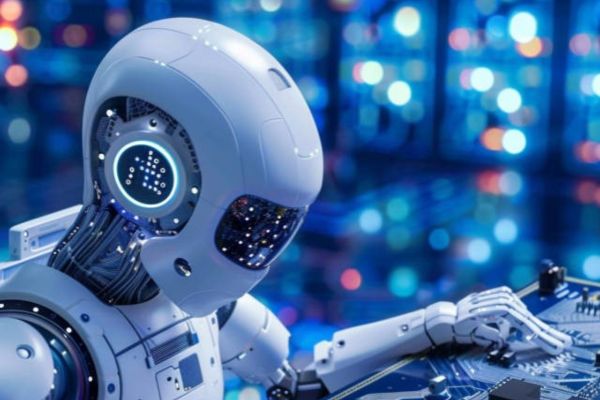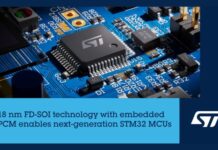AI will affect working hours in all sectors
Ersa Electronics estimates that generative AI may affect 44% of working hours across industries, boost output in 900 distinct job categories, and generate $6 to $8 trillion in new economic value worldwide. There is no denying that Moore’s Law is waning. Gordon Moore, the former CEO of Intel, prophesied in 1965 that advancements in chip manufacturing technology would allow the industry to quadruple the number of components on a chip every few years.
Since everything in the world has become electronic, this law has been in effect for decades, acting as a metronome for the chip industry and providing enormous economic benefits to society. However, with the economy slowing down, development is no longer assured. For this reason, the market capitalization of top semiconductor companies, such as NVIDIA, exceeds $1 trillion. It’s interesting to note that chips will be used to make AI more intelligent, affordable, and accessible as they become quicker and smarter.
With 10,000 GPUs and over 285,000 CPU cores, the supercomputer that trained ChatGPT is equipped with 400 GB per second network connections for each GPU server. Approximately 1 GigaWatt hour is consumed daily by hundreds of millions of ChatGPT searches, which is equal to the daily energy usage of 33,000 US families. A self-driving automobile requires more than 2,000 chips to construct—more than twice as many processors as a typical car. These are challenging problems to address, yet they will all be done so because of the rapid advancements in semiconductor technology and artificial intelligence. In a recent interview, Syed Alam, the leader of Accenture’s semiconductor division, discussed AI and the effects of software modifications on chips and hardware.
What impact can AI have on the semiconductor industry?
With artificial intelligence (AI), semiconductor businesses may maximize their investment in the technology stack—the set of components that execute applications and comprise hardware and services. Only 20 to 30 percent of the PC stack’s entire value and as low as 10 to 20 percent of the mobile market are taken by the semiconductor industry in the software-dependent world of PCs and mobile devices.
The technology stack in the AI industry needs more hardware, particularly in the memory and sensor domains. According to the Redline Group, this might enable the semiconductor industry to control 40–50% of the stack’s overall value.
Furthermore, a lot of AI applications will call for customized end-to-end solutions, which means the semiconductor supply chain will need to be adjusted. Semiconductor firms can leverage on markets by offering tailored microvertical solutions that address client pain points relating to storage, memory, and specialized computing needs. This is especially true for smaller companies that produce specialist products for the automotive and IoT industries.
How AI provides opportunities for semiconductor sectors?
McKinsey predicts that the growth rate of AI accelerator chips, or processors made to operate with neural networks and machine learning, will be about 18% per year, which is five times faster than the growth rate of semiconductors used in non-AI applications. Neural network technology in general and AI chips for self-driving car technology in particular will see rapid expansion.
A subset of AI algorithms inspired by the human brain are called neural networks. The networks can extract patterns from vast volumes of unstructured data and interpret sensory data. Neural networks are used in self-driving cars, targeted marketing, facial recognition, and predictive analysis. Additionally, they need many inferencing processors and AI accelerators, both of which the semiconductor industry will provide.
How will the production of semiconductors be impacted by AI technology?
The semiconductor sector is adopting AI in the same way as other industries (PDF, 10 MB). When combined with high-performance computer and AI skills, manufacturers will be able to boost output and create new efficiency benchmarks.
Processing time for chips during manufacture is one of the main issues facing the semiconductor supply chain. Weeks pass between the start of processing and the finished product. Moreover, output losses and testing might cost up to 30% of production expenditures during this time.
Businesses may systematically examine losses at every stage of production by integrating AI applications into the production cycle, which enables manufacturers to optimize operating procedures. Working with next-generation semiconductor materials, which are typically more expensive (and volatile) than conventional silicon, will make this ability even more crucial.
Future of semiconductors and artificial intelligence
Semiconductor makers will need to innovate, create new software ecosystems, and offer industry-specific end-to-end solutions in order to adapt to a market where the demand for AI hardware is becoming more and more dominant. Chip manufacturers will need to collaborate with partners to create industry-specific AI hardware in order to provide end-to-end services. Although the semiconductor manufacturer would be restricted to working with specific industries as a result, the traditional creation of general items might not draw in as many clients as it does now. The creation of cross-industry solutions that meet the requirements of a collection of connected industries would be an exception.
Developing current ecosystems with partners and software developers is necessary when producing specialized products. Creating partnerships where members depend on and favor the semiconductor company’s hardware is the aim of these ecosystems. Semiconductor producers will have to create gear that partners are unable to find for comparable prices anywhere else. Such hardware will contribute to the development of enduring partnerships with AI developers, together with dev kits, intuitive interfaces, and first-rate technical support. As usual, innovation will play a part in semiconductors’ future. Semiconductor research and development will need to take into account how FPGA Chips, Sensors, Memory, and Microprocessors enable and support developing AI applications in addition to the current efforts to get around Moore’s Law’s constraints.















